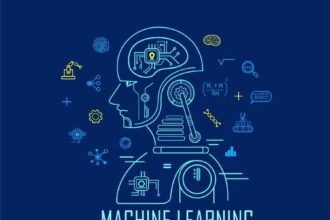Machine learning technology has led to some major changes in the world of online commerce. Many web developers are using machine learning to streamline many aspects of the design process. They are also using AI to improve the quality of their designs and create more engaging features that wouldn’t have been possible with traditional JavaScript or other programming language code.
Sophia Martin talked about some of the benefits of machine learning in web development in a post on Towards Data Science. She covered a number of advantages of AI, such as making coding easier, creating smart chatbots, better understanding customer behavior and improving the testing process.
Selenium is one of the newest tools that uses machine learning to help developers create stellar designs. Keep reading to learn how this open-source machine learning tool is disrupting web development for the better.
Selenium – an Open Source Web Development Tool that Uses AI to Transform Web Development
Companies are spending over $11 billion on web development services this year. They are getting more bang for their buck as developers use machine learning tools like Selenium to automate certain tasks.
Selenium is an open-source tool primarily used for automating tasks in web browsers. Selenium testing is has become crucial in the web development profession, since more users rely on it. If your business depends on a website or web application to engage with customers, there is a good chance that Selenium is already being used to test their experience.
Are you asking yourself the question of what is Selenium?
It is a single interface that supports many programming languages, including Ruby, Java, NodeJS, PHP, Perl, and Python. Since it supports multiple languages, the tool is not restricted to testers alone. Even developers use it to automate unit tests. Machine learning has made this process much easier.
Selenium is not only restricted to unit testing. It is also possible to perform multiple tests with Selenium, since AI technology has made automation much more feasible.
Here is an exhaustive list of the types of tasks that Selenium can automate with AI:
- Unit Testing: Developers can perform unit testing when a feature enhancement or a bug repair is applied to a web application module. Unit testing might be difficult when a developer has to work on several code modifications for separate modules. However, due to its sophisticated AI algorithms, Selenium is interoperable with several unit testing frameworks, which allows developers to quickly validate their unit testing across various browsers and operating systems.
- Performance Testing: QA testers conduct performance testing to ensure the project satisfies the set benchmark. Advances in machine learning have made these tests more reliable than ever. The developer creates a script that uses AI to evaluate whether all components on the homepage load in less than two seconds in various browsers and browser versions.
- Integration Testing: The QA team uses integration testing to ensure that components or units that work well alone also work well when integrated with each other. Even after the components have been integrated, testers ensure that they produce the same results. This occurs when more than one module is integrated to demonstrate functionality.
- Creating Testing Scripts: The AI algorithms embedded in the Selenium interface can also help with creating black-box testing scripts, which frees up time to create more novel test cases. This is one of the biggest benefits of using AI to improve testing capabilities with Selenium. Having understood what is Selenium and what are the types of testing Selenium supports, it is time to start using Selenium or the similar QA tools in your way to test automation.
- End-to-end Testing: The testing is done from the perspective of the end user. All the application areas are tested in end-to-end testing starting from the sign-in or login page. The goal is to make sure that all of the web app’s touch points work.
- Cross-browser Testing: Selenium’s success stems mostly from its ability to perform cross-browser testing. Selenium supports all major browsers and allows you to use a Selenium Grid to use machine learning to conduct browser automation to test your website across several browsers simultaneously.
- Black box Testing: System testing, also known as “black box” testing, is a type of testing in which testers examine the system’s compliance with particular standards during system testing. It uses complex AI algorithms to evaluate a module’s functioning from beginning to end. A QA expert could write a script to test the system’s overall functionality. The testers have never run any tests before and have no knowledge of the code’s context.
- Regression Testing: Regression testing is an important part of every release cycle for this reason. It ensures that new features may be seamlessly integrated into the existing system. It is, nevertheless, the most time-consuming procedure. You’d have to retest the entire web application if you made even a minor change. Regression testing is used to assess a web application’s or website’s end-to-end functionality once a code update is moved from one staging environment to another.
Machine learning technology has revolutionized the web development profession. Despite some of the misconceptions, more companies are going to use AI to automate web development tasks. Selenium is one of the tools these developers will need to rely on.











